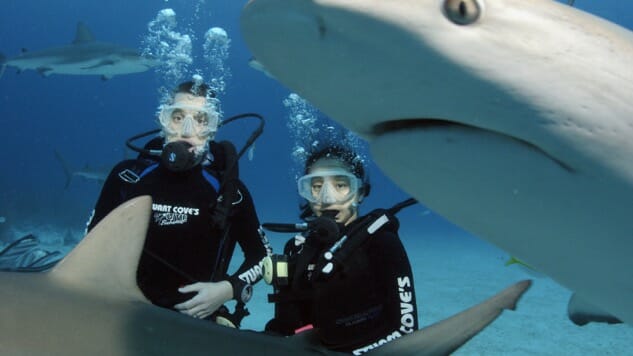deGeneration X: Swimming with Sharks off Sipadan Island

The movie Jaws traumatized me a young boy in the 1970s. Now as an adult, it was time to face my fears, but how many sharks are too many? I was about to find out.
It took me long enough, but I finally got my PADI dive certification at age 39 in Taganga, Colombia, and I intended to make full use of it when I visited Southeast Asia five months later. I dove off Koh Tao in Thailand and swam with manta rays off the Gili Islands in Indonesia, but all these underwater adventures were mere warm-ups to the big event in the shark-infested waters around Sipadan Island. I previously swam with sharks in the Galapagos Islands in Ecuador and Fernando de Noronha in Brazil, but those predators looked like minnows next to the giants roaming the Celebes Sea off Malaysian Borneo.
Sipadan, a 30-acre oceanic island in the Indo-Pacific basin, formed over thousands of years from living corals growing atop an extinct volcanic cone. Under the water, the island resembles a giant rock column shooting up nearly 2,000 feet from the seabed below. Many of the shear walls sit only 50 feet from the shore, creating stellar dive spots like the appropriately named Drop Off. The dozen or so main dive spots reportedly contain about 3,000 fish species and hundreds of coral species, but most people come to see the big fish, e.g., sharks, turtles and rays. Covered in rainforest, Sipadan became a bird sanctuary under British colonial rule, but today’s main attraction is what swims below the shore, not what soars above it.
-

-

-

-

-

-

-

-

-

-

-

-

-

-

-

-

-

-

-

-

-

-

-

-

-

-

-

-

-

-

-

-

-

-

-

-

-

-

-

-







































